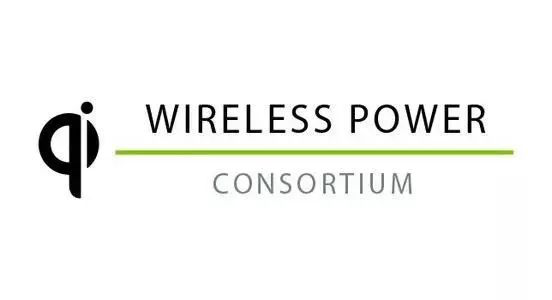The Future Is Wireless
WPC (Wireless Power Consortium) is a non-profit international standards organization. More than 600 members worldwide in Wireless Power Consortium are committed to promoting the safety and global compatibility of wireless charging. Qi logo and "QI" name are registered trademarks of Wireless Power Consortium. QI authentication and the use of QI symbols are authorized by Wireless Power Consortium.

YMP Industry Limited is one of the members of Wireless Power Consortium and keeps an eye on developments in Wireless Power Consortium. The following is a transcript of an interview by a Chinese media with Menno Treffers, chairman of WPC:
1Q: The battle for wireless charging standards, Qi prevailed. What do you think is the key reason for winning?
Menno: Qi prevailed for two reasons.
1)Created by companies with experience in bringing wireless charging products to market. Our members know what is possible and what is not possible in real products.
2)Created by companies with experience in successful industry standards. Our members know how to cooperate efficiently.
2Q: How do you evaluate Apple's role in the popularity of wireless charging?
Menno: Apple is one of the most influential brands. Their support for Qi helped a lot in making consumers aware of wireless charging.
3Q: What do you think of the cancelation of Apple AirPower: what kind of impact it will bring to the industry?
Menno: The delay in the launch of Apple's own charger has benefited the manufacturers of wireless chargers because they could sell more products to iPhone users. Apple's cancellation of AirPower doesn't change that. Apple customers still need a wireless charger. The demand is even higher with Apple's new AirPods with wireless charging case.
4Q: What's your view of proprietary extension?
Menno: Proprietary extensions are an easy way for manufacturers to increase the received power in a phone.
At the same time, the phone manufacturers want to support Qi.
We see increasing support for Qi's fast charge method – the extended power profile.
A good example is Xiaomi's M9. It supports 10W in Qi mode and 20W in proprietary mode.
5Q: How is the proprietary extension certified?
Menno: Wireless chargers can be tested for proprietary extensions as part of their Qi Certification. It is not a separate certification program.
Samsung Proprietary Extension is the first method that can be tested by the WPC.
Other proprietary extensions will be added when the owner of that method makes the test specification available to the WPC.
6Q: What has WPC done so far to promote the unification of proprietary extension?
Menno: The WPC is increasing the power levels supported by Qi. We call that the Extended Power Profile.
The current limit is 15W. That will increase to 30W and maybe even to 60W.
We see increasing support for the Extended Power Profile.
Xiaomi's M9 is a good example. LG and Sony are also making phones that support the Extended Power Profile.
7Q: What measures will WPC take to protect the rights and interests of its members from counterfeit products?
Menno: The main challenge for our members is the competition from products that have not been tested and are potentially unsafe.
These products look cheap but are often dangerous.
We work with all retail channels to make the professionals aware of the dangers of these uncertified products.
The best retail channels now actively promote Qi Certified products because they want to keep their customers safe.
Our cooperation with JD.com is a good example of this.
8Q: Can you let me know what do you think of China's wireless charging market? What is the difference between China market and overseas markets?
Menno: The main difference is that the overseas market started using wireless charging earlier.
Nokia and Samsung were the first adopters of Qi and their market share in China is relatively low.
China has caught up with Huawei, Xiaomi supporting Qi in their phones.
And China is now taking the lead in protecting consumers against unsafe products.
You can see that in the unique cooperation between the WPC, CCIA and JD.com. And we are also discussing with CESI from the safety standard perspective.
JD.com is our first e-commerce partner globally.
9Q: In addition to the low-power wireless charging market represented by mobile phones, what is the plan of the WPC in terms of medium-power and high-power wireless charging markets?
Menno: The WPC is close to releasing the 2200W kitchen specification.
We expect that will have a big impact on kitchen design and kitchen appliances. We get very positive feedback from the first prototypes.
10Q: After the explosive growth in 2017, the wireless charging market is developing steadily since 2018. Therefore, some people are pessimistic about the development of wireless charging in the next few years. What do you think of the market prospects in the next five years?
Menno: I expect that wireless charging market will continue to grow.
The adoption of Qi in mid-range phones and earphones is the next step.
Earphones have started to use Qi. Apple's announcement of Qi support in the new AirPods is significant.
And that means that the wireless charging market will continue to grow.
11Q: In the eyes of many consumers, long-distance charging such as Bluetooth or Wi-Fi is the real wireless charging. How far do you think the technology is away from commercially available?
Menno: Long distance wireless power is available today but only at very low power levels. milli-Watts, or even micro-Watts when the transfer distance is more than a meter.
The technology cannot deliver enough power for mobile phone charging. Its commercially availability is very far away.
12Q: Are you optimistic about the future wireless charging market? Any suggestions for wireless charging practitioners?
Menno: Yes. I am very optimistic. I expect the market will continue to grow.
My suggestions for practitioners:
Buy Qi Certified subsystems.
Develop your own wireless charger only when you expect very high volume or have special requirements.
That is the low-risk path to high-quality and lowest-cost products.
